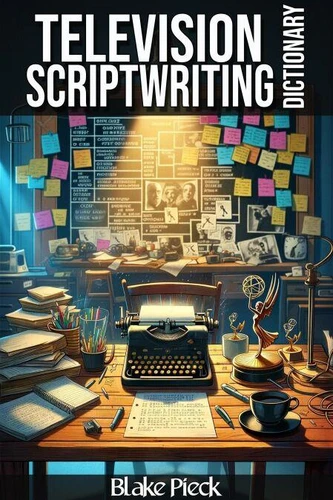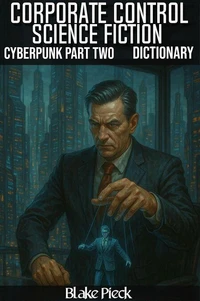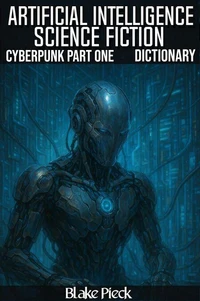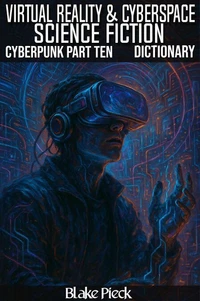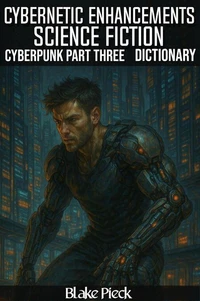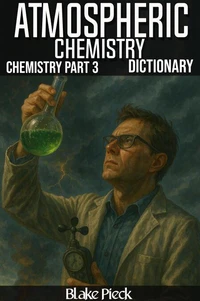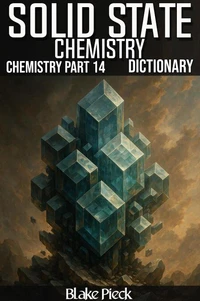Television Scriptwriting Dictionary. Grow Your Vocabulary
Par :Formats :
Disponible dans votre compte client Decitre ou Furet du Nord dès validation de votre commande. Le format ePub est :
- Compatible avec une lecture sur My Vivlio (smartphone, tablette, ordinateur)
- Compatible avec une lecture sur liseuses Vivlio
- Pour les liseuses autres que Vivlio, vous devez utiliser le logiciel Adobe Digital Edition. Non compatible avec la lecture sur les liseuses Kindle, Remarkable et Sony
 , qui est-ce ?
, qui est-ce ?Notre partenaire de plateforme de lecture numérique où vous retrouverez l'ensemble de vos ebooks gratuitement
Pour en savoir plus sur nos ebooks, consultez notre aide en ligne ici
- FormatePub
- ISBN8227150738
- EAN9798227150738
- Date de parution28/03/2025
- Protection num.pas de protection
- Infos supplémentairesepub
- ÉditeurBig Dog Books, LLC
Résumé
This book is a comprehensive guide to the unique aspects of writing scripts for television series. From structuring individual episodes to developing overarching story arcs, this dictionary provides aspiring and experienced television writers with the tools and techniques needed to create compelling and successful television shows. Through clear and concise entries, the Dictionary provides readers with a comprehensive and accessible reference to the key concepts and techniques used in writing scripts for television series.
Whether you're a novice writer looking to break into television or an experienced professional seeking to hone your craft, this dictionary is an invaluable resource for mastering the art of television scriptwriting. Episodic Structure: This section explores the typical structure of a television episode, including the teaser, acts, and tag. Topics include the purpose and function of each part of the episode, techniques for creating cliffhangers and keeping the audience engaged throughout the episode, and the differences between episodic and serialized storytelling.
Show Bible: Here, readers will learn about the importance of the show bible in television production. Topics include the components of a show bible, such as character descriptions, episode summaries, and series overview, as well as the role of the show bible in maintaining consistency and continuity throughout the series. Pilot Episode: This section focuses on the pilot episode, which serves as the introduction to the series and sets the tone and style for the rest of the show.
Topics include the key elements of a successful pilot episode, techniques for establishing the series premise and introducing the main characters, and the importance of a strong pilot in selling the series to networks and audiences. Multi-Episode Story Arcs: Readers will delve into the use of multi-episode story arcs in television series, where a story or character arc unfolds over several episodes.
Topics include planning and executing a multi-episode arc, creating suspense and anticipation for the resolution, and balancing the arc with standalone episodes to keep the audience engaged. Commercial Breaks and Act Structure: This section explores the role of commercial breaks in television storytelling and the structure of acts within an episode. Topics include the use of act breaks to create tension and pacing, techniques for writing effective act endings that keep viewers tuned in, and the impact of commercial breaks on storytelling and episode structure.
Whether you're a novice writer looking to break into television or an experienced professional seeking to hone your craft, this dictionary is an invaluable resource for mastering the art of television scriptwriting. Episodic Structure: This section explores the typical structure of a television episode, including the teaser, acts, and tag. Topics include the purpose and function of each part of the episode, techniques for creating cliffhangers and keeping the audience engaged throughout the episode, and the differences between episodic and serialized storytelling.
Show Bible: Here, readers will learn about the importance of the show bible in television production. Topics include the components of a show bible, such as character descriptions, episode summaries, and series overview, as well as the role of the show bible in maintaining consistency and continuity throughout the series. Pilot Episode: This section focuses on the pilot episode, which serves as the introduction to the series and sets the tone and style for the rest of the show.
Topics include the key elements of a successful pilot episode, techniques for establishing the series premise and introducing the main characters, and the importance of a strong pilot in selling the series to networks and audiences. Multi-Episode Story Arcs: Readers will delve into the use of multi-episode story arcs in television series, where a story or character arc unfolds over several episodes.
Topics include planning and executing a multi-episode arc, creating suspense and anticipation for the resolution, and balancing the arc with standalone episodes to keep the audience engaged. Commercial Breaks and Act Structure: This section explores the role of commercial breaks in television storytelling and the structure of acts within an episode. Topics include the use of act breaks to create tension and pacing, techniques for writing effective act endings that keep viewers tuned in, and the impact of commercial breaks on storytelling and episode structure.
This book is a comprehensive guide to the unique aspects of writing scripts for television series. From structuring individual episodes to developing overarching story arcs, this dictionary provides aspiring and experienced television writers with the tools and techniques needed to create compelling and successful television shows. Through clear and concise entries, the Dictionary provides readers with a comprehensive and accessible reference to the key concepts and techniques used in writing scripts for television series.
Whether you're a novice writer looking to break into television or an experienced professional seeking to hone your craft, this dictionary is an invaluable resource for mastering the art of television scriptwriting. Episodic Structure: This section explores the typical structure of a television episode, including the teaser, acts, and tag. Topics include the purpose and function of each part of the episode, techniques for creating cliffhangers and keeping the audience engaged throughout the episode, and the differences between episodic and serialized storytelling.
Show Bible: Here, readers will learn about the importance of the show bible in television production. Topics include the components of a show bible, such as character descriptions, episode summaries, and series overview, as well as the role of the show bible in maintaining consistency and continuity throughout the series. Pilot Episode: This section focuses on the pilot episode, which serves as the introduction to the series and sets the tone and style for the rest of the show.
Topics include the key elements of a successful pilot episode, techniques for establishing the series premise and introducing the main characters, and the importance of a strong pilot in selling the series to networks and audiences. Multi-Episode Story Arcs: Readers will delve into the use of multi-episode story arcs in television series, where a story or character arc unfolds over several episodes.
Topics include planning and executing a multi-episode arc, creating suspense and anticipation for the resolution, and balancing the arc with standalone episodes to keep the audience engaged. Commercial Breaks and Act Structure: This section explores the role of commercial breaks in television storytelling and the structure of acts within an episode. Topics include the use of act breaks to create tension and pacing, techniques for writing effective act endings that keep viewers tuned in, and the impact of commercial breaks on storytelling and episode structure.
Whether you're a novice writer looking to break into television or an experienced professional seeking to hone your craft, this dictionary is an invaluable resource for mastering the art of television scriptwriting. Episodic Structure: This section explores the typical structure of a television episode, including the teaser, acts, and tag. Topics include the purpose and function of each part of the episode, techniques for creating cliffhangers and keeping the audience engaged throughout the episode, and the differences between episodic and serialized storytelling.
Show Bible: Here, readers will learn about the importance of the show bible in television production. Topics include the components of a show bible, such as character descriptions, episode summaries, and series overview, as well as the role of the show bible in maintaining consistency and continuity throughout the series. Pilot Episode: This section focuses on the pilot episode, which serves as the introduction to the series and sets the tone and style for the rest of the show.
Topics include the key elements of a successful pilot episode, techniques for establishing the series premise and introducing the main characters, and the importance of a strong pilot in selling the series to networks and audiences. Multi-Episode Story Arcs: Readers will delve into the use of multi-episode story arcs in television series, where a story or character arc unfolds over several episodes.
Topics include planning and executing a multi-episode arc, creating suspense and anticipation for the resolution, and balancing the arc with standalone episodes to keep the audience engaged. Commercial Breaks and Act Structure: This section explores the role of commercial breaks in television storytelling and the structure of acts within an episode. Topics include the use of act breaks to create tension and pacing, techniques for writing effective act endings that keep viewers tuned in, and the impact of commercial breaks on storytelling and episode structure.

